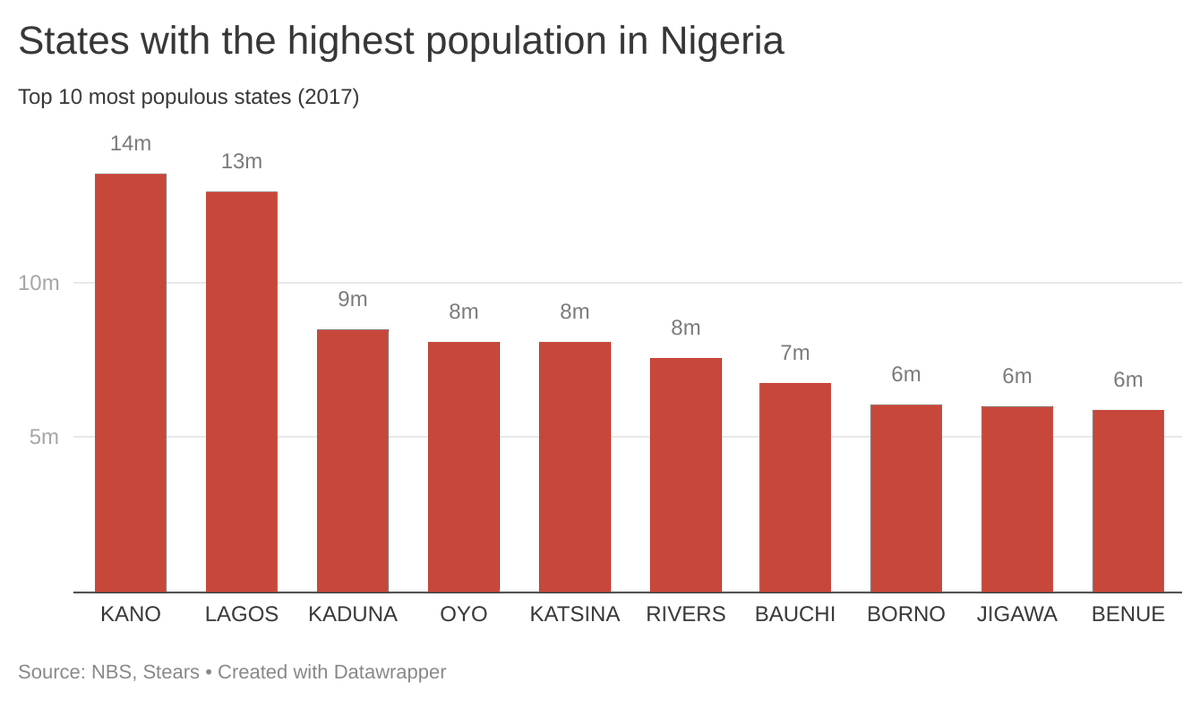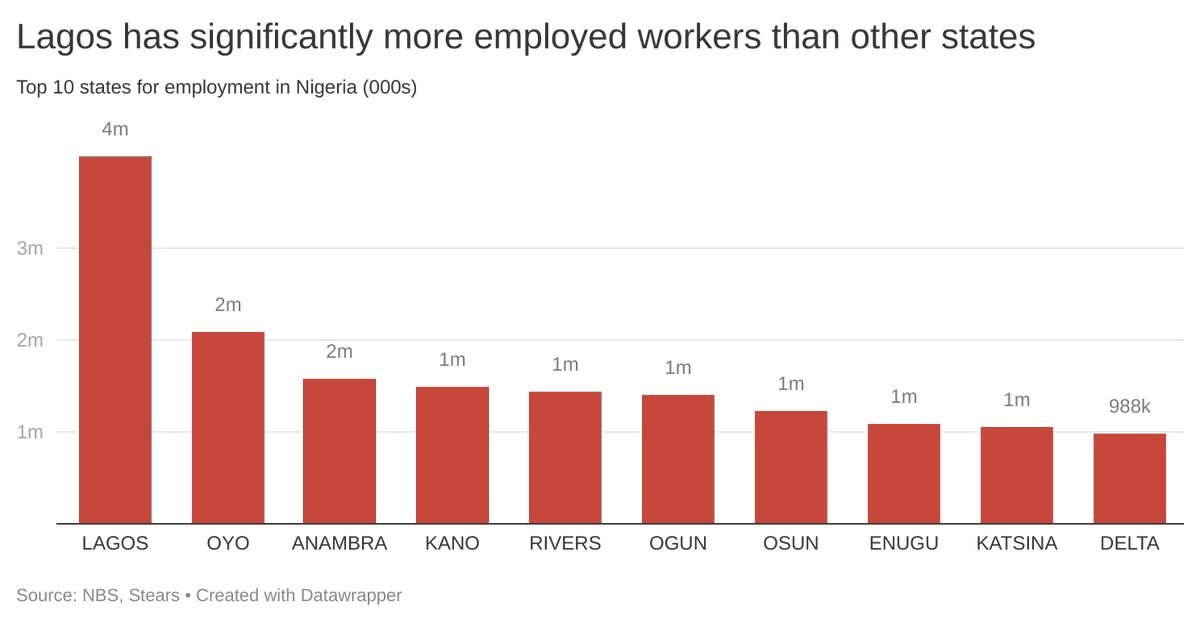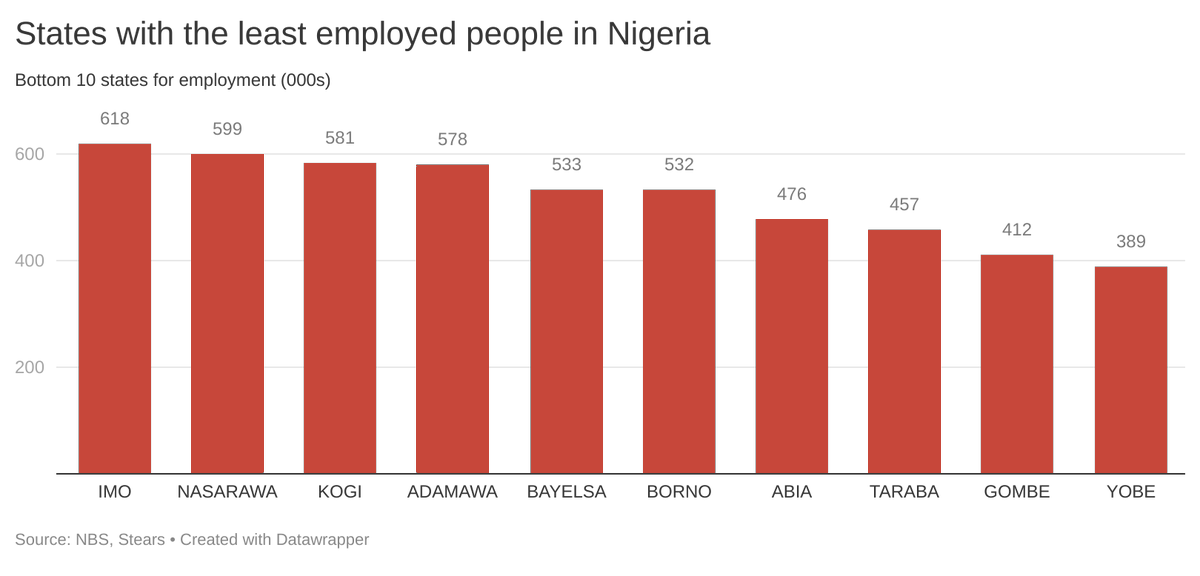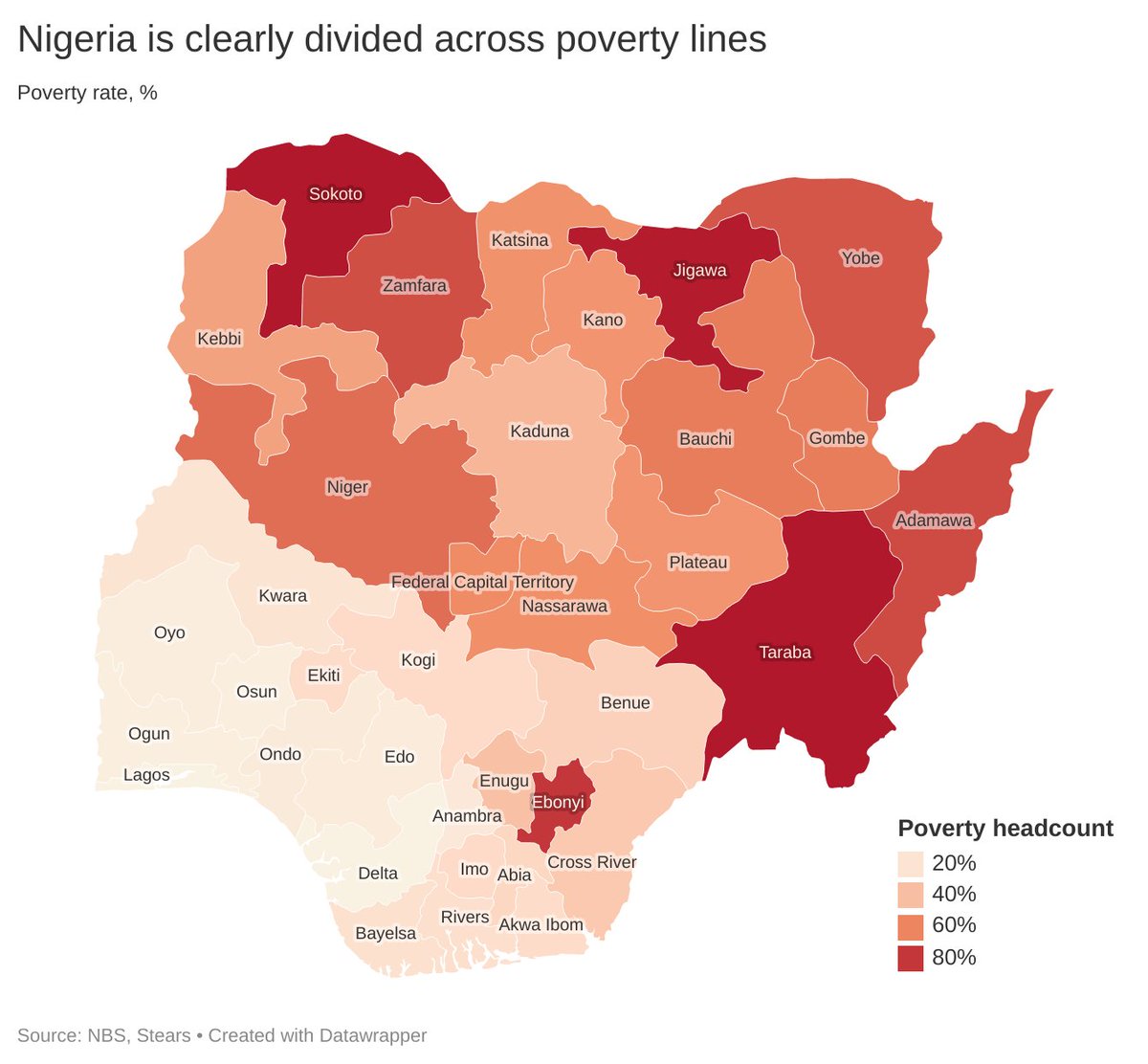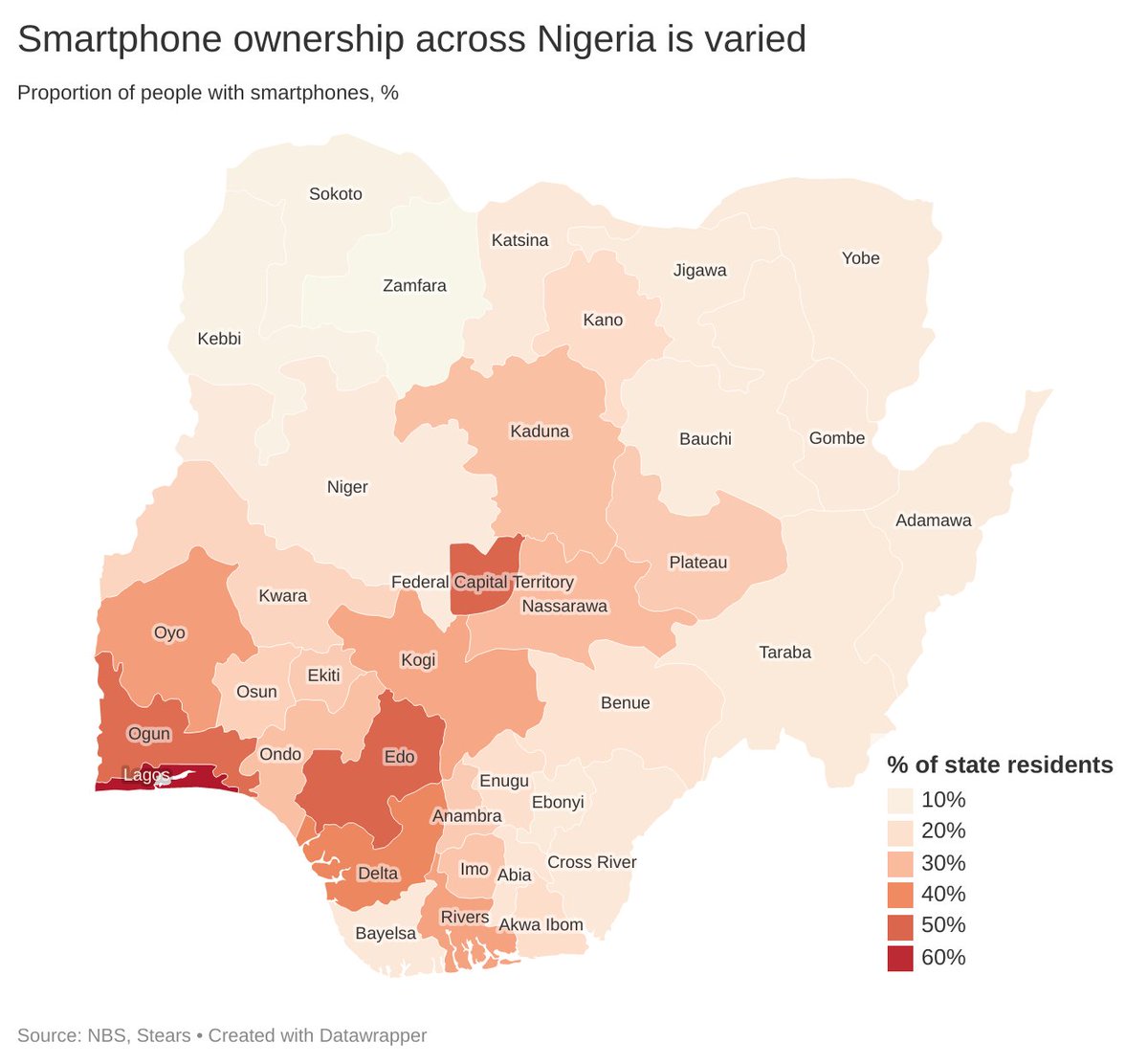The problem with the “population = market size" idea: It treats all ~200 million Nigerians as if they were the same. They& #39;re not.
Show me the money: An investor& #39;s guide to Nigeria’s consumer market
Which Nigerian states have the largest market size? https://www.stearsng.com/premium/article/show-me-the-money-an-investors-guide-to-nigerias-consumer-market">https://www.stearsng.com/premium/a...
Show me the money: An investor& #39;s guide to Nigeria’s consumer market
Which Nigerian states have the largest market size? https://www.stearsng.com/premium/article/show-me-the-money-an-investors-guide-to-nigerias-consumer-market">https://www.stearsng.com/premium/a...
The first major one is that the population numbers are pretty dodgy. Nigeria has not conducted a census since 2006, so these estimates are based on 15 year old census figures.
To get a sense of market size, we need to know how much money people have, not just how many there are.
To get a sense of market size, we need to know how much money people have, not just how many there are.
The easiest way to do this is by looking at GDP per capita. BUT GDP per capita numbers still rely on population numbers and the NBS only has accurate GDP estimates for 22 Nigerian states.
Take these numbers with a pinch of salt.
Take these numbers with a pinch of salt.
GDP is not a great measure of income in Nigeria, mainly because it does not consider the distribution of income. And Nigeria is a highly unequal society and inequality varies pretty widely across the country.
Rather than looking at raw GDP or population numbers, we can look at labour market data. After all, it is reasonable to believe that people in full-time jobs can afford much more stuff than those out of work.
Taraba and Yobe have just about 500,000 salaried workers
Taraba and Yobe have just about 500,000 salaried workers
Imo State has 3x as many unemployed or underemployed people as full-time workers. Abia has nearly two and a half times more people in some form of unemployment, while Gombe, Adamawa and Taraba all have 2x as many unemployed as employed.
Niger and Zamfara states have a poverty headcount of 66% and 74%, respectively.
Nigeria’s consumer market is much smaller than its population.
Nigeria’s consumer market is much smaller than its population.
The best way to estimate market size is by looking at what people spend.
Large Northern states have too many poor and unemployed people to be attractive markets, and the same is true for states like Imo and Ebonyi.
Large Northern states have too many poor and unemployed people to be attractive markets, and the same is true for states like Imo and Ebonyi.
Summary:
1. Lagos, Oyo, and Ogun are in the top 5, but so are Delta and Edo. Delta has the 2nd lowest poverty rate in Nigeria while Edo residents rank 1st for car ownership and 2nd for smartphone ownership.Edo is arguably as attractive as Oyo and Ogun on a per capita basis.
1. Lagos, Oyo, and Ogun are in the top 5, but so are Delta and Edo. Delta has the 2nd lowest poverty rate in Nigeria while Edo residents rank 1st for car ownership and 2nd for smartphone ownership.Edo is arguably as attractive as Oyo and Ogun on a per capita basis.
2. Rivers and Abuja are not as appealing as their reputations would suggest. Abuja has a poverty rate of 39% and River’s is 24%. Abuja is a very polarised region: it is the 3rd most unequal state and actually has more unemployed or underemployed people than in full-time jobs.
3. Lagos is Nigeria’s largest market—but other findings are more surprising. Nigeria’s most attractive consumer markets are clearly clustered in the South-West region of the country, but not many people would have counted Edo and Delta in that group.
https://www.stearsng.com/subscriptions/ ">https://www.stearsng.com/subscript...
https://www.stearsng.com/subscriptions/ ">https://www.stearsng.com/subscript...

 Read on Twitter
Read on Twitter